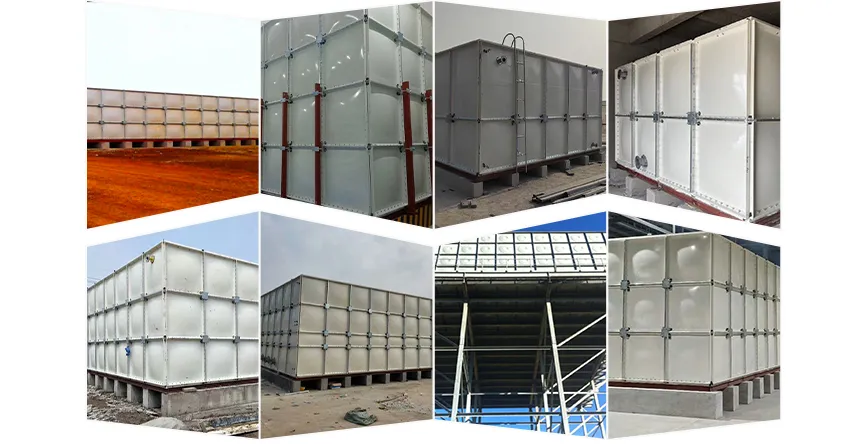loading...
- No. 9, Xingyuan South Street, Dongwaihuan Road, Zaoqiang County, Hengshui, Hebei, China
- admin@zjcomposites.com
- +86 15097380338
- Welcome to visit our website!
grp water tank price
Understanding GRP Water Tank Prices A Comprehensive Guide
As water conservation becomes increasingly critical in our modern world, the demand for efficient storage solutions has surged. Among various options available, Glass Reinforced Plastic (GRP) water tanks have gained significant popularity due to their durability, lightweight nature, and resistance to corrosion. However, potential buyers often find themselves asking, What can I expect regarding GRP water tank prices? This article aims to shed light on the factors influencing pricing, typical costs, and the overall value proposition of investing in a GRP water tank.
What is a GRP Water Tank?
A GRP water tank is made from glass-reinforced plastic, which combines the tensile strength of glass fibers with the lightweight properties of plastic. This composite makes GRP water tanks durable, resistant to environmental stressors, and suitable for various applications, including residential, commercial, and industrial use. One of the critical advantages of GRP tanks is their resistance to corrosion and UV damage, making them an ideal choice for long-term water storage.
Factors Influencing GRP Water Tank Prices
1. Size and Capacity Like many products, the price of GRP water tanks varies significantly with size and capacity. Smaller tanks suitable for residential use typically cost less than larger, industrial-scale units. Common sizes range from a few hundred liters to over 30,000 liters, with prices scaling accordingly.
2. Manufacturing Standards The quality of manufacturing and standards adhered to during production can also impact the price. Tanks that meet international standards such as ISO or British Standards might come at a premium but offer better durability and reliability.
3. Customization Many manufacturers provide the option for customized GRP tanks tailored to specific requirements. Custom features such as additional insulation, specific fittings, or bespoke dimensions will contribute to higher costs.
grp water tank price

4. Brand Reputation Established brands with a proven track record for quality often command higher prices than lesser-known manufacturers. Investing in a reputable brand can provide peace of mind regarding performance and warranty support.
5. Additional Features Some GRP tanks come with integrated features such as filtration systems, level indicators, and other advanced functionalities. These additional features can increase the initial investment but might provide better long-term value by enhancing efficiency and safety.
Typical Pricing Range
The price for GRP water tanks can vary widely based on the aforementioned factors. Generally, small residential tanks (around 1,000 to 5,000 liters) can range from $300 to $1,200. Medium-sized tanks (5,000 to 15,000 liters) might cost between $1,200 and $5,000, while large tanks (15,000 liters and above) can range from $5,000 to $20,000 or more, depending on customizations and brand choices.
Value for Money
When considering GRP water tank prices, it’s essential to weigh the cost against the long-term benefits. GRP tanks offer excellent longevity, with lifespans often exceeding 30 years, which can translate into substantial savings over time compared to cheaper alternatives that may need frequent replacement. Additionally, their lightweight nature can result in lower transportation and installation costs.
Conclusion
In an era where water conservation and efficient storage are paramount, GRP water tanks present a robust solution for various needs. While the initial price might seem high in comparison to other materials, understanding the factors that influence these costs can help potential buyers make informed decisions. By considering aspects such as size, manufacturing quality, and additional features, consumers can determine the best GRP water tank for their requirements. Ultimately, investing in a GRP water tank is not just about the price tag; it’s about ensuring reliable, long-term water storage solutions that offer excellent value for the investment.
-
The Rise of FRP Profiles: Strong, Lightweight, and Built to LastNewsJul.14,2025
-
SMC Panel Tanks: A Modern Water Storage Solution for All EnvironmentsNewsJul.14,2025
-
GRP Grating: A Modern Solution for Safe and Durable Access SystemsNewsJul.14,2025
-
Galvanized Steel Water Tanks: Durable, Reliable, and Ready for UseNewsJul.14,2025
-
FRP Mini Mesh Grating: The Safer, Smarter Flooring SolutionNewsJul.14,2025
-
Exploring FRP Vessels: Durable Solutions for Modern Fluid HandlingNewsJul.14,2025
-
GRP Structures: The Future of Lightweight, High-Performance EngineeringNewsJun.20,2025
